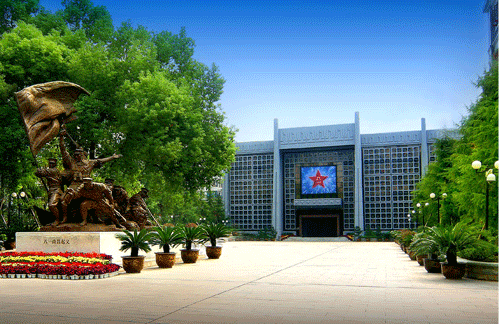Introduction to the Museum

In the spring and summer of 1927, just as the Nationalist-Communist cooperation was achieving victories in the Northern Expedition and the workers' and peasants' movements were flourishing, the right-wing factions of the Kuomintang, led by Chiang Kai-shek and Wang Jingwei, successively betrayed the revolution, brutally slaughtering Communists and revolutionary masses, leading to the failure of the great revolution.
In the face of extremely severe circumstances, should we persist in the revolution? How to persist in the revolution? These are two fundamental questions facing the Communist Party of China. The Party provided a clear answer through the actual action of armed uprising. At 2 a.m. on August 1, under the leadership of the Central Committee of the Communist Party of China, with Zhou Enlai as the secretary, He Long, Ye Ting, Zhu De, Liu Bocheng, and others led over 20,000 troops controlled and influenced by the Party to launch an uprising in Nanchang. After more than four hours of intense fighting, the uprising army annihilated over 3,000 enemy troops and occupied the city of Nanchang.
The Nanchang Uprising fired the first shot of armed resistance against the reactionary Kuomintang, declaring with blood and fire the strong determination of the Communists to resist violence and persist in the revolution, establishing a banner of revolutionary armed struggle before the entire Party and the people of the nation, marking the beginning of the Communist Party of China’s independent leadership of the revolutionary war, the establishment of the people's army, and the armed seizure of power.
On August 3, 1927, according to the decision made by the Central Committee of the Communist Party of China before the uprising, the uprising army withdrew from Nanchang, taking the route through Linchuan, Yihuang, and Guangchang, heading south to Guangdong to occupy the coastal exit, hoping to obtain international assistance and establish a revolutionary base, and then re-launch the Northern Expedition. Although the uprising army achieved significant victories during the southward journey, they ultimately suffered serious setbacks in the Chaoshan area due to the enemy's strength and their own weakness. After the defeat in Chaoshan, part of the uprising army moved to the Hailufeng area to join local peasant armies and continued to fight; another part, led by Zhu De, Chen Yi, and Wang Erzhuo, after the "Three Rectifications in Southern Jiangxi" and the Southern Hunan Uprising, met with the autumn harvest uprising troops led by Mao Zedong at Jinggangshan, forming the Fourth Army of the Workers' and Peasants' Revolutionary Army, creating conditions for further consolidating and expanding the Jinggangshan revolutionary base.
The Nanchang Uprising opened a new era for the Communist Party of China to independently lead armed struggle and establish the people's army, and it also trained and nurtured a group of key figures in party governance, state governance, and military governance. After long-term revolutionary warfare, the soldiers of the Nanchang Uprising gradually grew into important leaders of the Party and the state, and founding generals of the Republic. The revolutionary spirit embodied and reflected in them is an extremely valuable spiritual asset for the Communist Party of China and the people of the nation.
Copyright 2021 Nanchang August 1st Uprising Memorial Hall All Rights Reserved |Bayi Pavilion WeiboWebsite construction:www.300.cn



